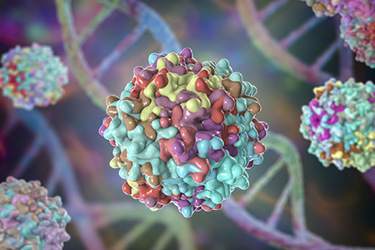Novel Dual-Plasmid Transfection System Improves Titer And Product Quality In AAV Manufacturing
By Tim Kelly, Chief Executive Officer, Oxford Biomedica Solutions

Adeno-associated virus (AAV) vectors are a widely-used, versatile, and appealing gene therapy delivery platform because of their high safety profile and ability to target many different cell types and transport healthy gene copies into a patient’s cells. The recent clinical successes of AAV-mediated gene therapies1 have ignited interest in solutions for the scalable, good manufacturing practice (GMP) production of AAVs, and high demand for outsourced development and manufacturing capabilities. Yet, significant challenges remain, particularly around product quality, productivity, and consistency. Achieving high quality is incredibly important as it directly affects patients’ health and safety. Productivity and consistency are also critical from a supplier and economics perspective.
Oxford Biomedica (OXB) Solutions has developed a novel, proprietary dual-plasmid system as a means of addressing some of the issues with the traditional transient transfection process used to produce AAVs. This system has consistently demonstrated improved productivity and product quality across multiple serotypes, and it can be leveraged to obtain significant process gains in the manufacturing pathways of advanced therapies while maintaining the flexibility of transient transfection.
Get unlimited access to:
Enter your credentials below to log in. Not yet a member of Bioprocess Online? Subscribe today.
